 |
JAPANESE PRINTS
A MILLION QUESTIONS
TWO MILLION MYSTERIES
Ukiyo-e Prints浮世絵版画 |
|
Port Townsend, Washington |
UTAGAWA TOYOKUNI III
三代歌川豊国
さんだい.うたがわ.とよくに
1786-1864
Series Title: "36 Selected Beauties"
Meigi sanjūroku kasen
名妓三十六佳撰
(The kanji shown above was corrected on 10/12/14.)
Number 18
十八
Print Title: "The Story of the Courtesan Hinazuru"
ひな鶴の話
Signed: ōju Toyokuni ga
応需豊国画
Publisher: Tsutaya Kichizō
Date: 1st Month, 1861
Size: 14 3/4" x 10"
Illustrated:
There is another copy of this print shown on-line at the site devoted to
the Museum für angewandte Kunst in Vienna
SOLD!
|
|
|
|
|
|
|
|
|
|
When we first purchased this print we were struck not only by the beauty and clear, intense colors, but also by the imagery: the courtesans casually watching the storm, the prominent nature of the lightning itself, the comfortable setting with the brazier, blue and white porcelain teacup and the magic lantern. But it was the lightning which really caught our attention. For that reason we have assembled a page of print details illustrating the representation of lightning with an emphasis on the historical development and the variations in style. Click on the lightning mon below to view our page on lightning in Japanese woodblock prints.
Illustrated: Ukiyo-e: Japanische Farbholzschnitte des 19. Jahrhunderts - Schenkung Dr. Hans Lühdorf, by Friedrich W. Heckmanns, Kunstmuseum Düsseldorf im Ehrenhof, 1990, p. 77, number 107.
|
Kyōsai Magic Lantern Detail Dancing Tengu |
|
Toyokuni III Magic Lantern Detail Firemen |
|
Kyōsai Magic Lantern Detail Ghoulies |
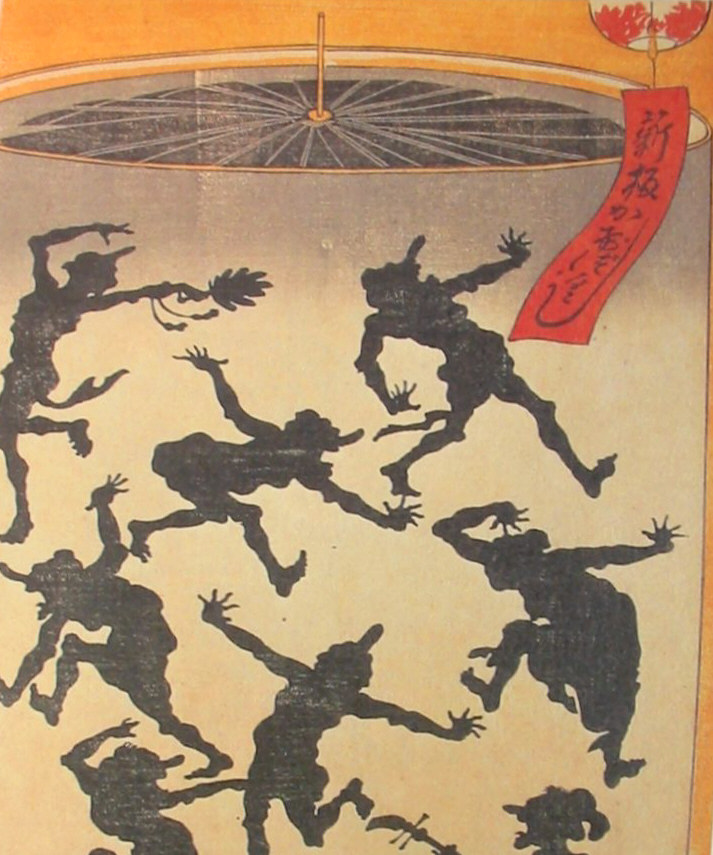 |
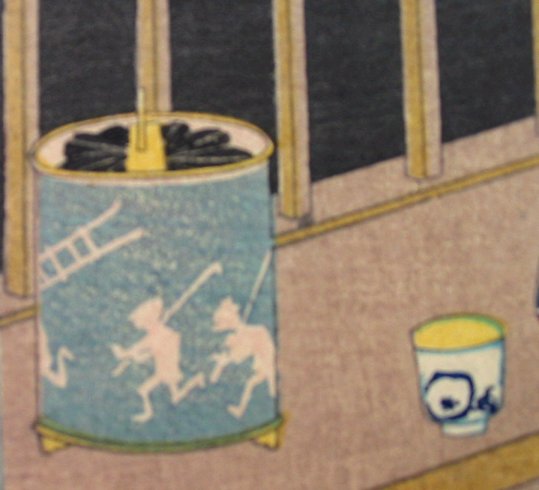 |
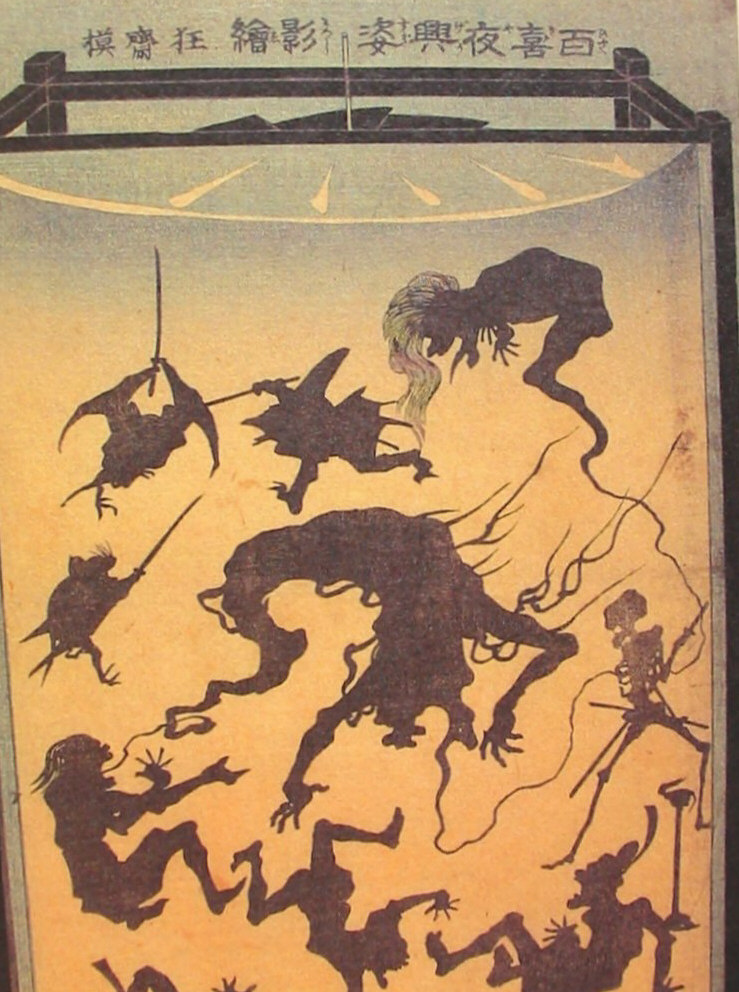 |
||
|
When I was about two years old my parents would tuck me in for the night and leave for some peace and quiet. Soon they would hear me screaming for help, come running to my room, turn on the light and try to calm me down. I was obviously terrified and would swear that there was a wolf outside my window. Eventually they would soothe my fears, leave the room and turn off the light again. Soon I would be screaming bloody murder and they would come back in. Of course, they thought it was me and my vivid imagination. But no....
Parents don't always learn quickly. It turns out that they had placed a planter in the shape of a lamb with a soft green glaze on my window sill. Whenever the light went out in my room the light from the street lamp would shine into the room and cast a menacing shadow of a very frightening wolf on the far wall. After a lot of trauma and a slow learning curve on the part of my parents they finally saw the error of their ways and the lamb planter was moved to sit atop my little dresser. The wolf went away. |
||||
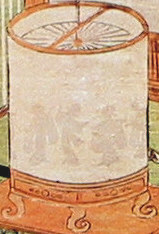 |
||||
| Above is a detail of an image of a revolving lantern from the 1770s. | ||||
| The mawari-dōrō (回燈籠 or まわりどうろう) or revolving lantern was popular in the 18th and 19th centuries. | ||||
|
My best friend made an interesting observation: the revolving lantern seen on the ledge of the print above displays the silhouettes of firemen running to a fight a fire. Considering the significant history of conflagrations in Edo and the role which lightning may have played in some of them then it only makes sense that Toyokuni III would have chosen this oh-so-subtle element as an adornment for this beautiful print. |
||||
|
What do you do when the kids have the measles and you can't let them out to play? |
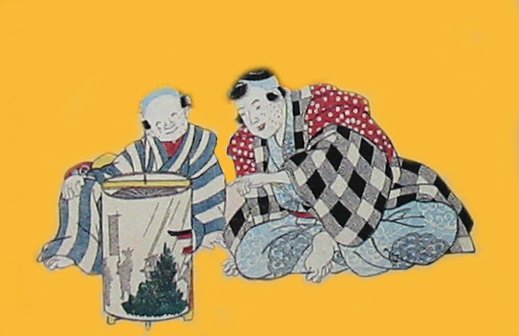 |
|
Answer: Have them spend hours of joy watching the magic lantern of a fox procession. (Detail of a print by Sadahide) |
|
Recently I was doing some research on the Internet --- today is October 14, 2003 --- when I ran across a link to an exhibition at the Ethnographic Museum of Zurich University. They currently have an exhibition of the Hans Spörry collection of bamboo objects which include decorated wedges. One of these shows a young woman seated outside, wearing a summer robe, holding a fan and looking up at a magic lantern which is hanging from a pine tree. The silhouettes on the lantern are images of firemen rushing to a fire and very much like ones shown in the Toyokuni III print on this page.
I asked for permission to put a link to the university's web site page to which they graciously agreed. While that link no longer exists on the web we are able to show you that example anyway. |
 |
 HOME
HOME |